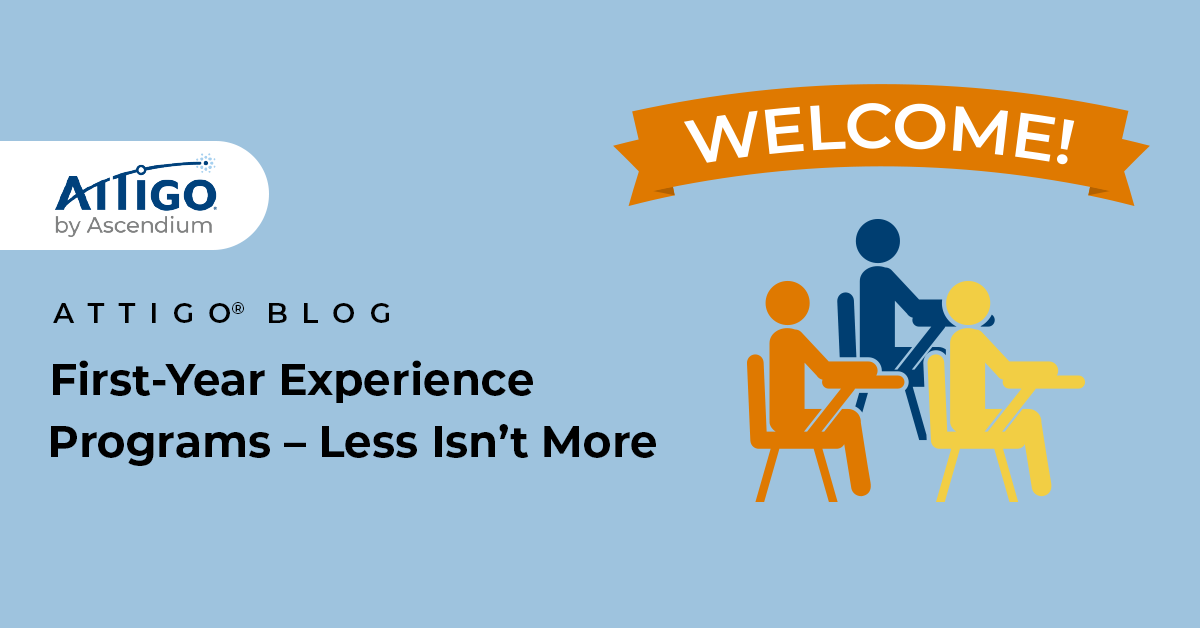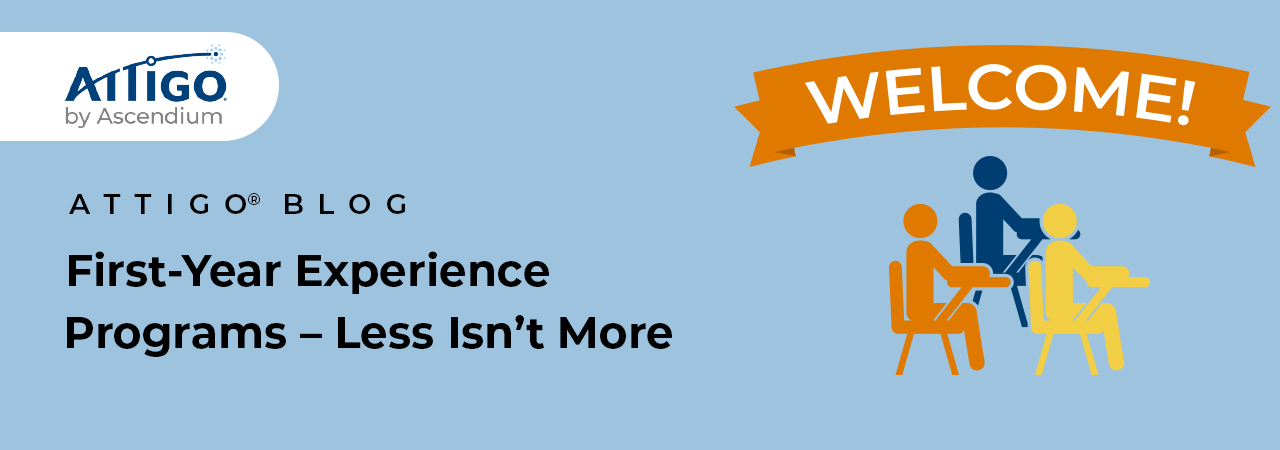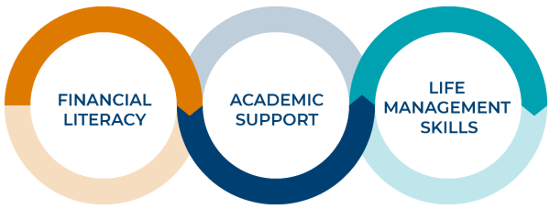
Speak with any college freshman, and they’ll likely have something to share about their school’s first-year experience (FYE) program. Over 90% of four-year institutions and over 80% of two-year institutions now have some sort of FYE program in place (source).

Take a look at any college’s website, and you’ll quickly see that these programs are becoming broader in scope and extensive in terms of curriculum. Freshmen and FYE programs didn’t always go hand-in-hand. So why now do these programs keep appearing? And why do the amount of topics and time spent on them keep growing? This post explores why there’s a push for comprehensive FYE programs, what a comprehensive program looks like, and one simple thing you can do to take your school’s FYE to the next level.
FYE Programs directly correlate with student Success
Studies continue to draw the same conclusion. The presence of FYE programs have a positive impact on students across the board resulting in:

- Better management of credit accumulation
- Actual degree attainment
- Improved academic achievement (source)
Perhaps even more important are findings that professional success and overall well-being of the student post-education links back to the support and experiences they received in college (source). So there’s no questioning just how pertinent a robust FYE program is to any school. In this instance, less isn’t more. Schools who are dedicated to student success demonstrate a higher level of commitment by creating a FYE that meets often (like an actual college course) with numerous topics covered. In turn, deeper experiences are afforded to the student (source). Those deeper experiences increase student retention, persistence, and adequately prepare students for the demands of today’s employers (source: ETSU).
But those results are only realized when FYE programs:

- Provide a platform for students and staff to form connections
- Enhance intellectual development of the student
- Shed light on strategies related to academic, personal, social, financial, and professional success
- Help facilitate overall student well-being (source)
That’s a lot of responsibility to place on any one course, so the expanding amount of topics in response is unsurprising. Some of the most common—and perhaps most valuable—topics include:
|
|
Making financial wellness a priority
We believe a key topic on this list is financial wellness, since its absence often results in poor retention and graduation rates (source). Beyond the direct impact it has in-school, it affects students’ “mental and physical well-being and even their ability to find employment after graduation” (source).
The reality is that many students come into college “with little preparation, experience, or knowledge of how to manage their money” (source). “[Schools] have a tremendous opportunity to directly influence the financial capabilities and financial decision-making of students” (source). Seizing that opportunity is one of the best ways to ensure students graduate and move forward in life successfully.
 We asked Melissa Warthen, former Director of New Student Programs at the University of Pittsburgh who used the award-winning, web-based financial wellness tool GradReady® in 2015, why the introduction of financial wellness into their FYE program was a priority.
We asked Melissa Warthen, former Director of New Student Programs at the University of Pittsburgh who used the award-winning, web-based financial wellness tool GradReady® in 2015, why the introduction of financial wellness into their FYE program was a priority.
“In addition to adjusting to a new academic, living, and social environment, first year students are adjusting to a new financial environment, too. It is important to the University of Pittsburgh to provide new students with information we believe they will need to be successful.”
GradReady comes equipped with a dashboard designed to track student progress, and its web-based platform supports pre-enrollment—effectively immersing incoming freshmen in financial wellness material before they officially begin college. “The pre-enrollment [feature and dashboard] allow us to track students by cohort and basically see [who’s engaging and who isn’t]. This allows us to better target messages to students and nudge them along in the process of completion”, said Warthen.
If your FYE program doesn’t list financial wellness as a priority, consider adding an accessible tool to your curriculum that:
- Grants your school transparency with regard to student engagement
- Includes student knowledge checks
- Covers financial wellness, academic and life skill support topics
- Is supported on mobile devices, placing financial wellness into the pockets of every student
- Is easy to implement and utilize in a way that resonates with students
- Can save your school on staffing and resources which can then be used to strengthen other areas of your FYE

Above all, student success and financial wellness are largely up to colleges and universities. Especially when you consider that only 20 states require personal finance courses in high school (source). How will you move forward and prepare the next generation of professionals?
Reminder
To make sure you’re current on all things related to higher education student success, subscribe to our monthly Attigo Connects newsletter delivered right to your inbox.




